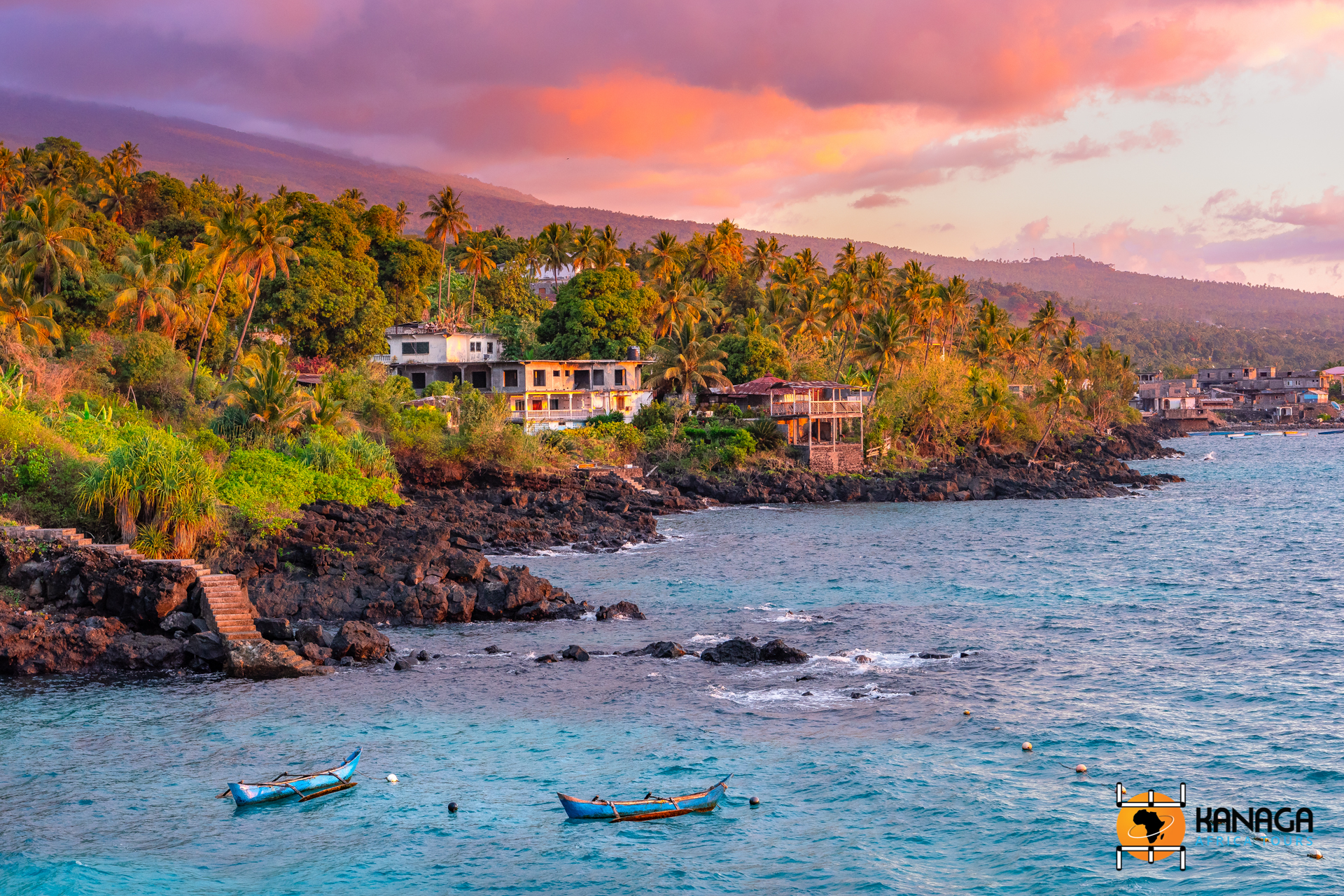One does not often hear of the Comoros among the international beach tourism circuits. Least of all Moheli, the smallest of the archipelago’s islands, and the wildest and most unexplored, where its extraordinary natural beauty is not as well supplied with accommodation facilities. And yet, this very fact makes it one of the most fascinating, authentic and primordial destinations in the entire Indian Ocean, a destination for true connoisseurs, completely exclusive.
Protected, for much of its southern surface, within the Parc Marin de Moheli, the island is a collection of secluded beaches and unspoilt bays, where turtles come to lay their eggs, dolphins dart out to sea and dugongs or humpback whales mingle among the islets that grace its largely uninhabited coastline.
Expanses of sand fringed with coconut palms, crystal-clear water as only the Indian Ocean can provide, and a primordial nature, interrupted only by sporadic fishing villages and a few eco lodges, basically equipped to receive the most adventurous and passionate travellers. Moheli also has a rich history, of exotic all-female sultanates, closely linked to the legendary jurisdiction of Zanzibar, which are lost in the echoes of the island‘s ancient trading port, protected by the islets and Nioumachoa Bay, which over the centuries saw a multitude of Bantu, Swahili, Malagasy, Indochinese, Shirazi and European merchants and people pass through, while turtles continued undisturbed to lay their eggs on Itsamia beach. If the current capital Fomboni is equipped with a few accommodation facilities, the rest of the island is still practically wild and unspoilt, with a few traditional lodges, repurposed for overnight stays and managed by a local NGO that is involved in the preservation of the natural heritage.
But the Comoros are in their entirety a veritable Eden unexplored, or at least very little visited by international tourism.
The island of Grande Comore is the main one, with its dark volcanic rocks punctuating a multitude of inlets and contrasting with the white beaches and turquoise water that open up into splendid corners of paradise, between the picture-postcard panoramas of Chomoni and Chindini, in the south, and Maloudja, a seaside resort framed by the nearby Lac Salé of Niamawi, a lake mirror set, like a sapphire, in an ancient crater.
Anjouan, on the other hand, rich in history, fragrant plantations and wild nature, is the ideal island for snorkelling enthusiasts, with its splendid coral reef or the magnificent Moya beach, among many others. As enchanting are its views on the surface as its colourful seabed, exuberant with underwater life.
What is certain is that all three of the islands that make up the Comoros are still a long way from the glossy realities of tourist brochures or photo posters that promote exotic destinations more for their all-inclusive resorts than for their paradisiacal marine nature or their primordial, unspoilt environment. Well, in the Comoros there are still no ‘Arabian Nights’ resorts, but the exclusivity is entirely entrusted to the extraordinary beauty of the places, and the priceless luxury of finding oneself practically alone in front of the Earthly Paradise. Breathtaking beaches without tourists, of moving unspoilt beauty, islands inhabited by a discreet and welcoming local population, proud of a thousand-year history and attached to their ancient traditions that smell of essences and saltiness, of coconut and coffee, of aromas that mingle in the humid mist of the wilderness, where endemic bats flutter and lemurs hop, dolphins and whales dart, while silent turtles lay their eggs.
A luxury that will not last long, because there are not many deserted islands and beaches anymore.







